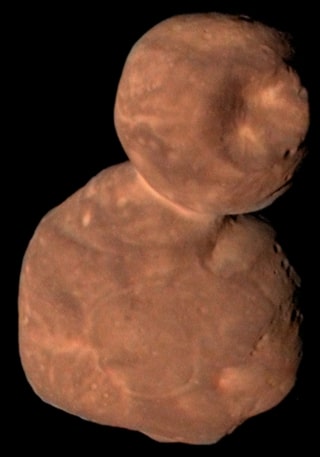This time last year, the New Horizons mission visited the furthest object humanity has ever reached — Arrokoth, beyond the orbit of Pluto in an area called the Kuiper Belt. Now, scientists have analyzed the data from this mission and found evidence of how the building blocks of planets first formed in our solar system.
The Arrokoth object consists of two lobes, joined together in a way that suggests it was formed when two objects gently collided. Because it is so distant from the sun, it is a pristine sample of the formation of planetary building blocks, called planetesimals.
“Arrokoth is the most distant, most primitive and most pristine object ever explored by spacecraft, so we knew it would have a unique story to tell,” New Horizons Principal Investigator Alan Stern, of the Southwest Research Institute in Boulder, Colorado, said in a statement. “It’s teaching us how planetesimals formed, and we believe the result marks a significant advance in understanding overall planetesimal and planet formation.”

There are two competing theories of planetesimal formation. One says that planetesimals form from the collapse of particle clouds driven by gravity, in a gentle, low-velocity process. The other says that existing objects slam together at increasingly high speeds in a process called hierarchical accretion.
“Just as fossils tell us how species evolved on Earth, planetesimals tell us how planets formed in space,” William McKinnon, a New Horizons co-investigator from Washington University in St. Louis, explained in the statement. “Arrokoth looks the way it does not because it formed through violent collisions, but in more of an intricate dance, in which its component objects slowly orbited each other before coming together.”
Further evidence from Arrokoth points to the former explanation being correct because of its smooth surface and carefully co-joined shape. The color suggests the object was formed from nearby material in the Kuiper Belt, not from distant objects which traveled toward it.
“Arrokoth has the physical features of a body that came together slowly, with ‘local’ materials in the solar nebula,” said Will Grundy, New Horizons composition theme team lead from Lowell Observatory in Flagstaff, Arizona, and the lead author of another Science paper. “An object like Arrokoth wouldn’t have formed, or look the way it does, in a more chaotic accretion environment.”
The findings are published in a trio of papers in the journal Science.



